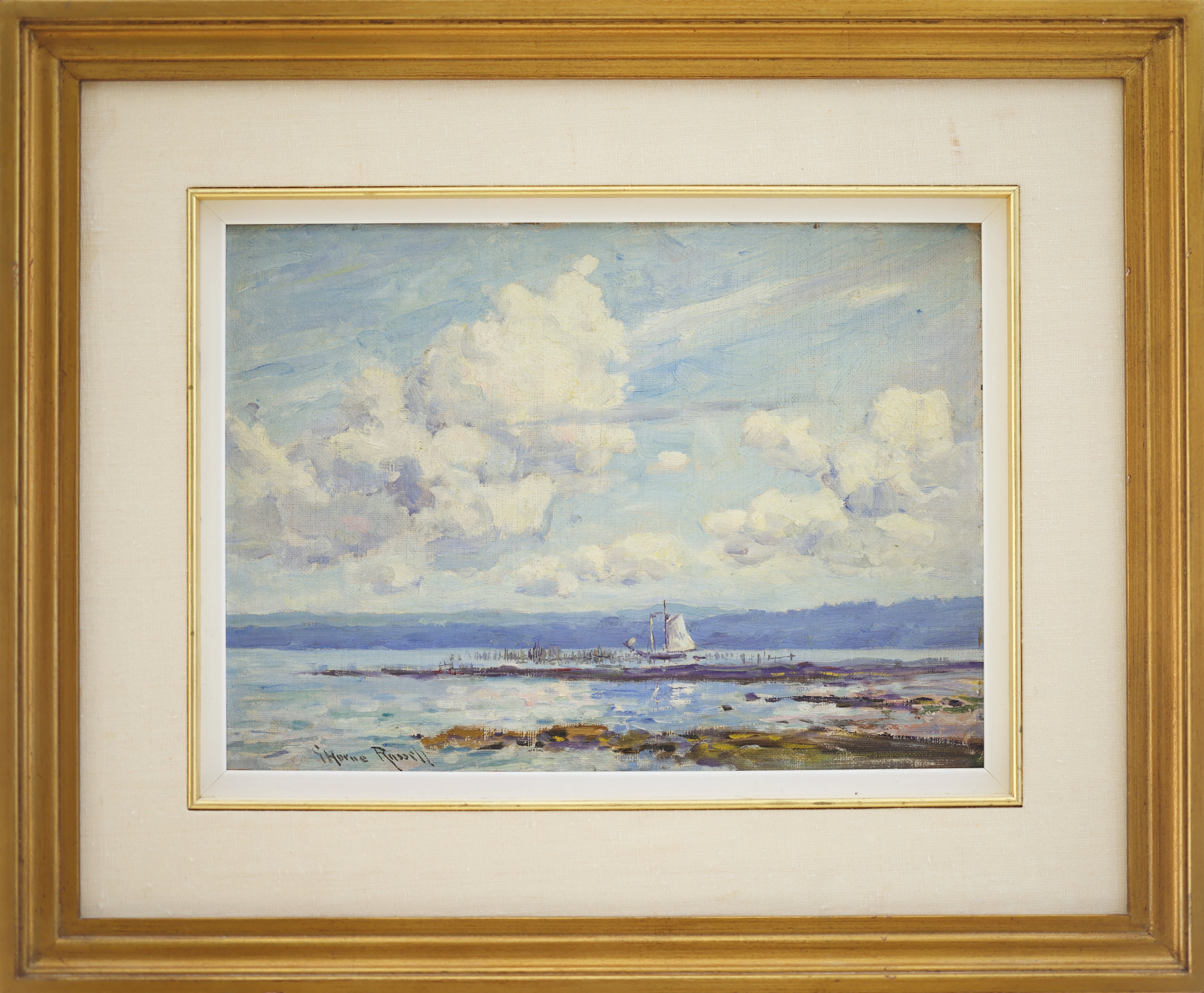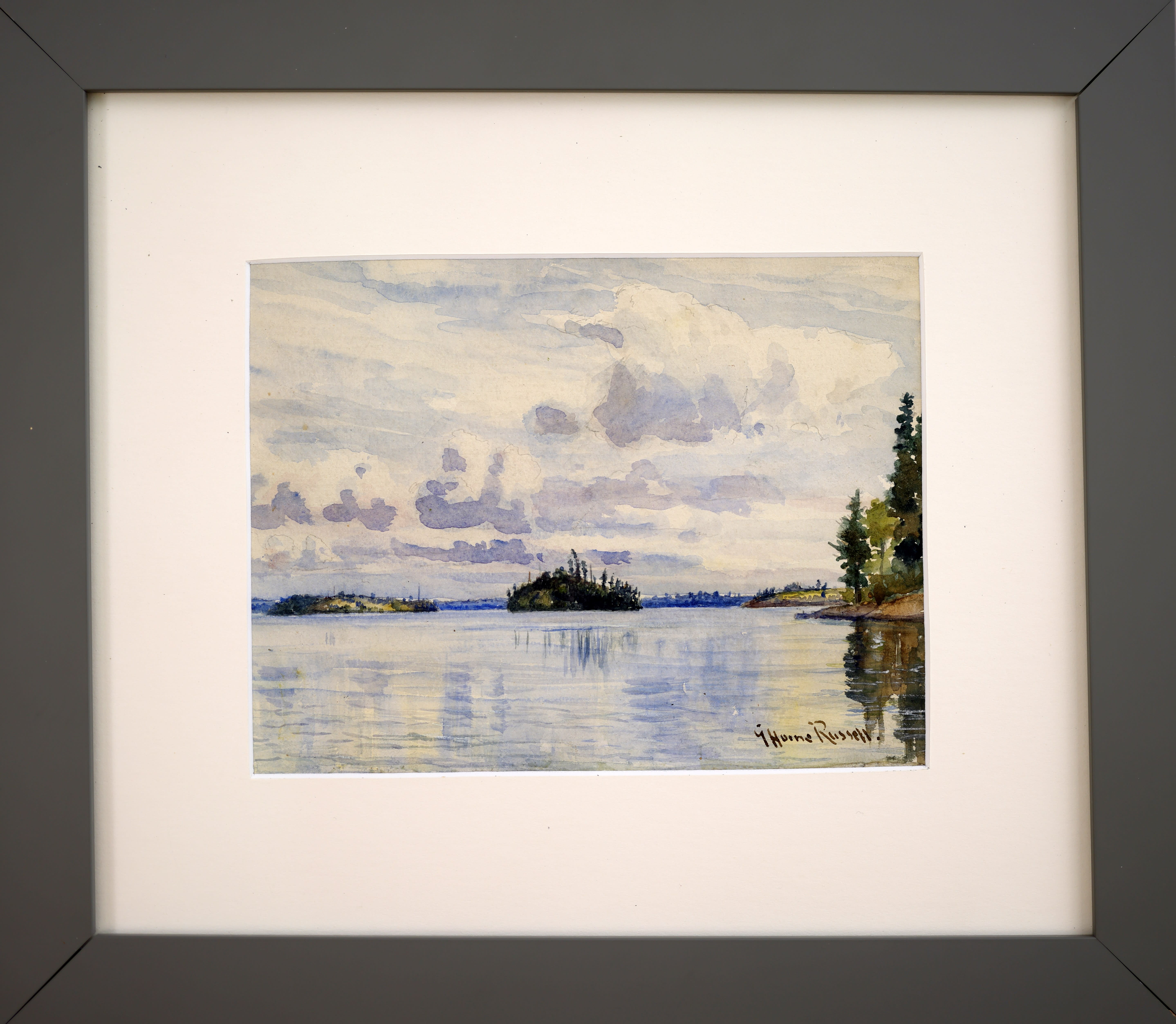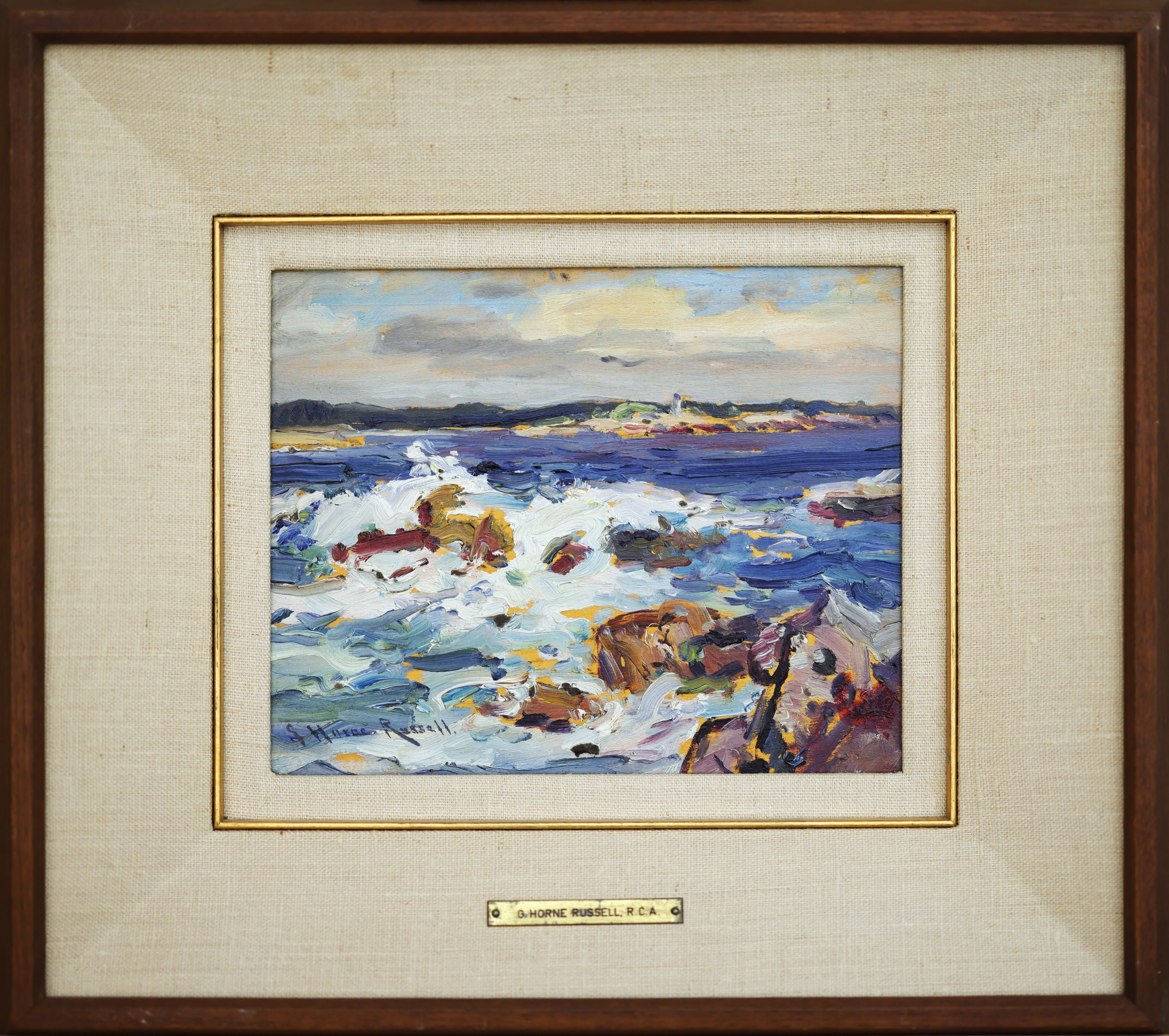George Horne Russell (April 18, 1861 – June 24, 1933) was a Scottish-born Canadian painter known for his exceptional portraiture, maritime, and landscape works. He was a key figure in Canadian art, serving as the President of the Royal Canadian Academy of Arts (1922–1926).
Early Life and Education
Born in Banff, Scotland, Russell showed artistic promise from an early age. He studied at the Aberdeen School of Art and later at the South Kensington School of Art in London under renowned instructors such as Professor Alphonse Legros and Sir George Reid. His talent for portrait painting flourished, leading to local commissions in the UK before being encouraged by a friend to move to Canada for greater opportunities.
Career in Canada
In 1889, at the age of 28, Russell relocated to Montreal, where he established a successful studio. He became a sought-after portraitist, painting notable figures such as Sir Wilfrid Laurier, Lord Strathcona, and Sir Alexander Lacoste. However, his passion extended beyond portraiture to landscape and maritime scenes, particularly the Canadian wilderness and coastal environments.

George Horne Russell; Joe's Point, St. Andrews, NB
By 1900, Russell was commissioned by the Canadian Pacific Railway (CPR) and later the Grand Trunk Railway to capture the majesty of Canada’s landscapes. His large-scale paintings of the Rockies, including Mount Robson and Kicking Horse Pass, were widely exhibited, earning him national acclaim. His ability to blend artistic vision with realism in vast, immersive landscapes set him apart as one of Canada’s premier painters of the natural world.

George Horne Russell; On Lake Joseph, Muskoka Lakes
Maritime and Landscape Art
Russell’s deep love for the sea influenced much of his work. In the early 1900s, he spent summers painting along the East Coast of Canada, particularly in St. Andrews, New Brunswick, where he built a summer home and studio. His marine paintings, seascapes, and coastal scenes, such as Boy Clam Digger and Fishing Schooners, became some of his most celebrated pieces. His ability to capture the interplay of light and movement in oceanic settings established him as one of Canada’s foremost maritime painters.

George Horne Russell; Breakers, New Brunswick
Leadership and Legacy
Elected an Associate of the Royal Canadian Academy of Arts in 1909 and a full Academician in 1918, Russell was later appointed President (1922–1926). During his tenure, he championed the rights of Canadian artists, notably leading the RCA’s efforts to influence selections for the 1924 British Empire Exhibition at Wembley.
Russell also contributed to commercial art, creating posters and illustrations for the CPR, including promotional materials for its hotels and ships. His artistic contributions extended to exhibitions with the Art Association of Montreal, the Ontario Society of Artists, the Canadian National Exhibition, and international showcases such as the Brussels International Exposition.
Personal Life and Death
Russell was known for his engaging personality and ability to put his portrait sitters at ease. A tall and vigorous man, he maintained his Scottish accent and strong connections to his homeland while fully embracing his adopted country. He was a member of the Montreal Arts Club and the Pen and Pencil Club, where he mentored younger artists.
Russell passed away on June 24, 1933, in St. Stephen, New Brunswick, and was buried in St. Andrews. His legacy lives on through his paintings, which continue to be admired for their beauty, technical excellence, and historical significance in Canadian art.
Collections and Recognition
Russell’s works are held in numerous esteemed collections, including:
-
National Gallery of Canada
-
Art Gallery of Ontario
-
Montreal Museum of Fine Arts
-
Glenbow Museum
-
Ross Memorial Museum
-
Canadian Club, New York




